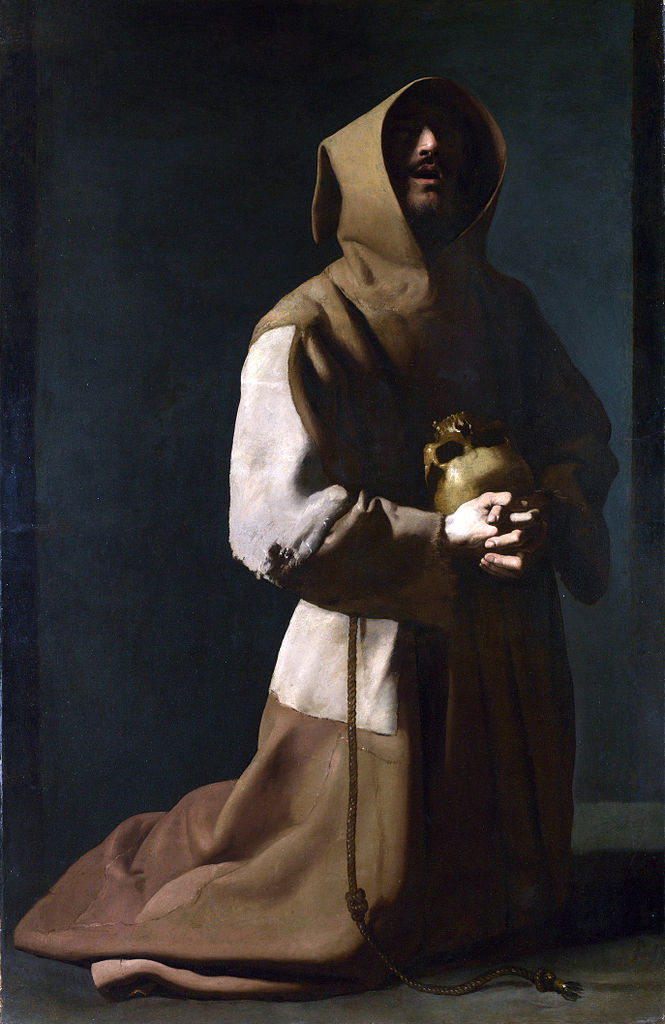The liturgical season of Lent is upon us, with its many familiar symbolic associations: ashes, the Cross, penance, prayer, fasting, almsgiving. These and others are our annual companions as we travel the traditional 40-day journey that leads to Calvary and beyond.
Perhaps not so familiar, though, is the possibility of sharing that journey this year with a saint whom we don’t necessarily associate with the Lenten season — Saint Francis, the little poor man of Assisi (1182 – 1226).
Many are acquainted with Saint Francis for his intense devotion to the Lord Jesus and His Gospel, his love of creation, the strict poverty of his lifestyle, his humility. What may not be so well understood is the depth of his contemplative prayer life and its impact, not only on the expansive growth of the Franciscan Orders, but indeed on every aspect of his own earthly life.
Also not so widely known is the fact that where the concept of Lent is concerned, this prayer life was intensified not just once annually, but several times during the course of Francis’ years of ministry.
When we hear the term Lent, we immediately associate it as in our opening — with the time of prayer, penance, and preparation for Jesus’ Passion, Death, and Resurrection. This “Great Lent,” as it was sometimes termed, was only one such period for Francis. To him, Lent as a spiritual concept was a recurring opportunity to deepen his already profound prayer life leading up to several important feasts throughout the liturgical year.
Examples of such “extra” Lenten seasons, so to speak, were the period beginning on the Feast of All Saints on November 1st and ending on Christmas; and that of preparation for the September 29th Feast of Saint Michael the Archangel, beginning on August 15, the Feast of the Assumption of Our Lady.
During the latter prayer period in 1224 A.D., two years before Francis’ death, the depth of his contemplation was revealed in a most profound way. On Mount Laverna, lost in meditation upon Jesus’ Passion and Crucifixion, Francis experienced the Seraphic vision, climaxed by the imposition of the Stigmata on his body. Thus, he was united physically as well as spiritually with the Savior he had pledged his life to emulate.
Concerning one particular “Great Lent,” as described in an early biographical source, The Little Flowers of St. Francis of Assisi, we find a recounting of a time in which the saint responded to divine inspiration in a most unusual manner.
As Ash Wednesday approached, Francis was staying in Perugia, not far from Assisi. It came to him in prayer that he should spend that Lent in solitude on an uninhabited island on Lake Trasimeno nearby. On the night before Ash Wednesday, a friend rowed him to the island, having agreed not to disclose Francis’ whereabouts to anyone, and to return for him on Holy Thursday.
Francis spent that entire Lenten season alone on the island, sheltered only by a rude self-made hut of brambles in an overgrown forest. As The Little Flowers states simply, “he began to pray there and enter into the contemplation of divine things.”
It was this entering “into the contemplation of divine things” which had become the hallmark of Francis’ life. These numerous “Lenten” periods of particularly intense prayer and severe fasting most often were spent alone, in out-of-the-way hermitages and other remote locations, far from distractions and human companionship. In the end, though, solitude for Francis would have been a companionable experience, not a lonely one, accompanied all the while by the One who had full possession of his heart.
While our modern-day lives may preclude lengthy, strict fasts and extended periods of solitude like his, Saint Francis can teach us much about improving our approach to Lent this year. Drawing away from daily distractions and closer to Jesus; entering into consistent periods of contemplation through silence and solitude; deepening and renewing our prayer life — all can yield enormous spiritual benefits extending far beyond Lent.
Perhaps one aspect of that renewed prayer life can be found in Francis’ Prayer before the Crucifix:
Most High, glorious God,
enlighten the darkness of my heart
and give me true faith,
certain hope,
perfect charity,
sense and knowledge,
Lord,
that I may carry out
Your holy and true command.
Amen.










